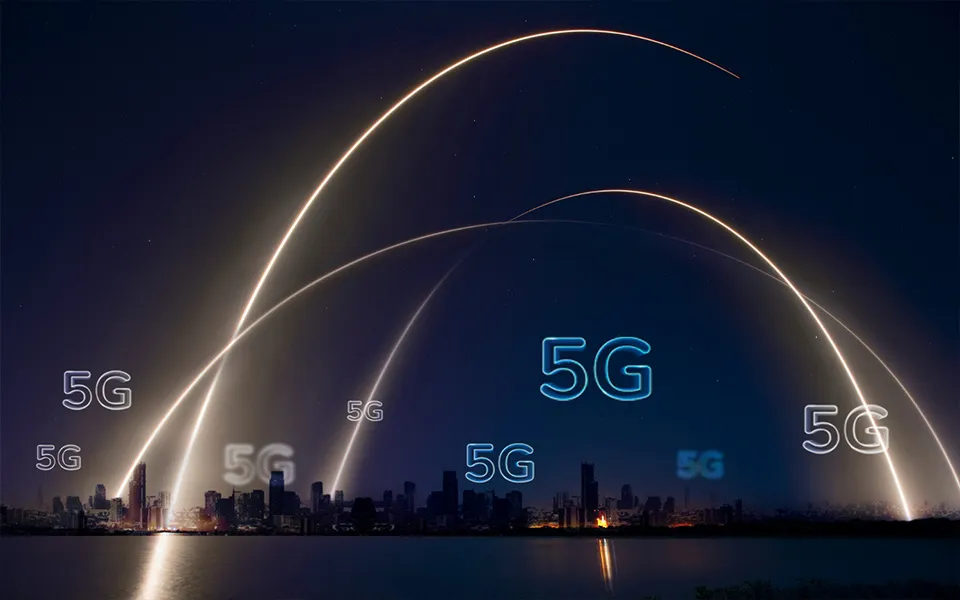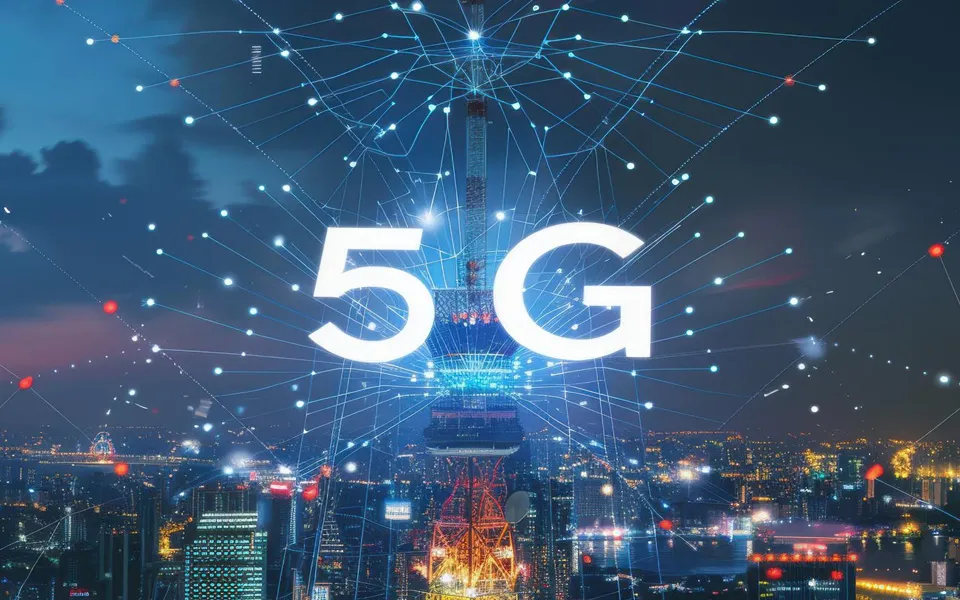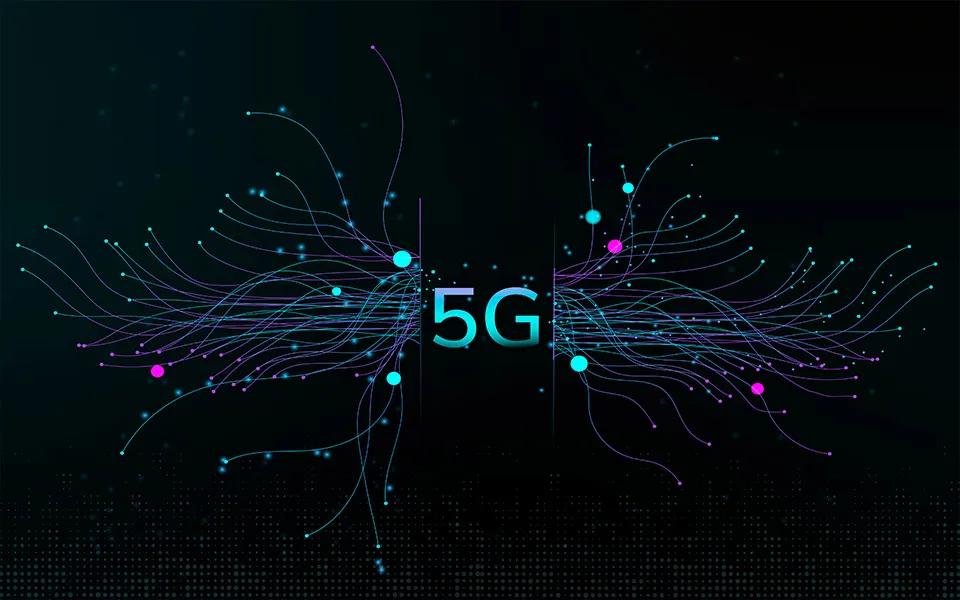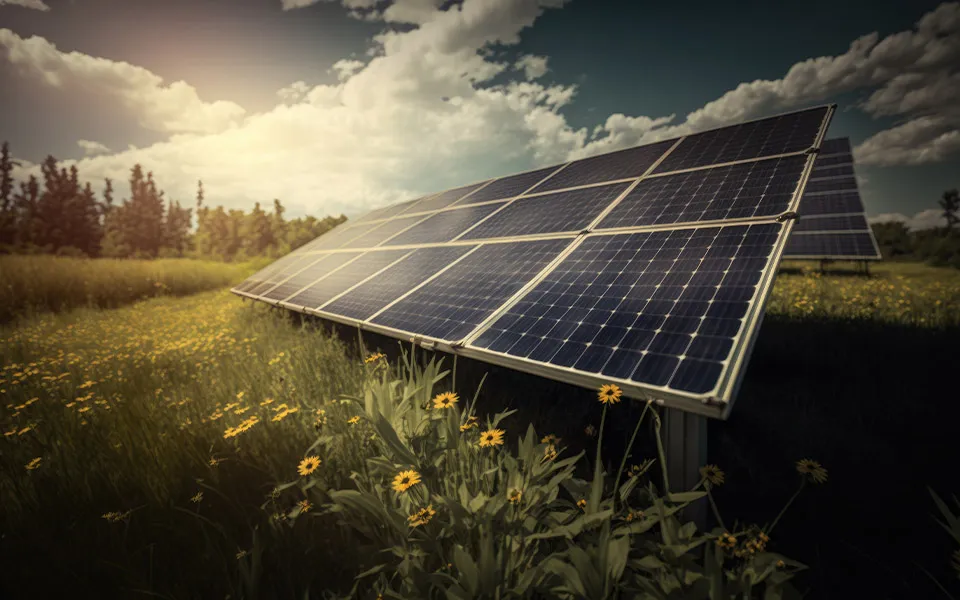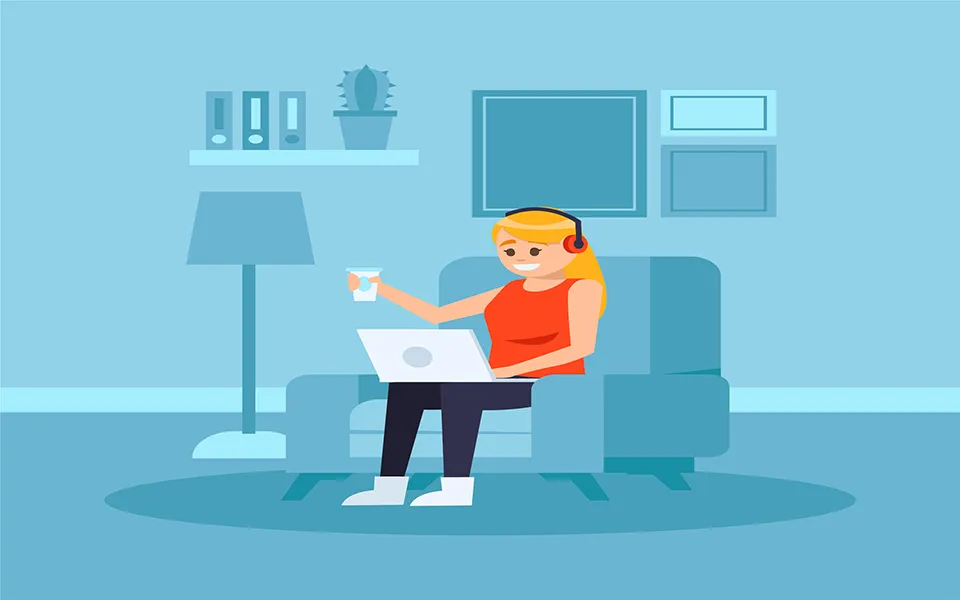The Role of IoT in Smart Buildings
The Internet of Things (IoT) technology has fundamentally transformed the architecture and functionality of modern buildings. This technological revolution has enabled the creation of smart buildings, characterized by a network of interconnected devices and systems powered by the Internet. These advancements offer significant advantages to property owners and occupants by automating various building functions and optimizing resource utilization. Consequently, smart buildings enhance energy efficiency, reduce carbon footprints, and contribute to the development of sustainable cities. Moreover, IoT applications significantly improve the occupant experience by providing enhanced comfort, convenience, safety, and security.
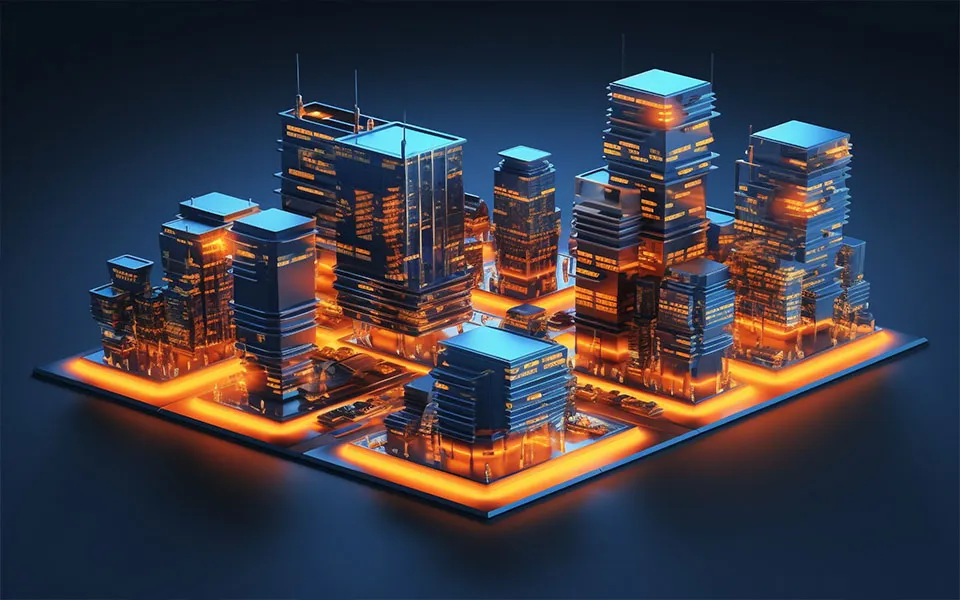
Cutting-Edge IoT Applications in Smart Buildings
In the current business landscape, the integration of green technology is imperative for cost savings and operational improvements. The Internet of Things (IoT) emerges as a viable solution in this regard. IoT comprises network-enabled devices embedded with sensors, which are connected to the internet. These devices, ranging from smartphones and wearable gadgets to smart appliances, can collect and exchange data for remote control, monitoring, and automation purposes.
The integration of IoT in buildings, whether commercial or residential, has led to the creation of more intelligent, efficient, and responsive facilities. Smart buildings, powered by interconnected systems and devices, are becoming increasingly prevalent. Below are practical use cases of IoT applications in smart buildings:
- Building Automation System (BAS): BAS automates the control of plumbing, electrical, and heating, ventilation, and air conditioning (HVAC) systems using sensors and remote controllers. This system enhances efficiency and reduces manual intervention.
- Smart Thermostats: These devices regulate building temperatures based on weather conditions and room occupancy, improving comfort and energy efficiency.
- Lighting Control Systems: These systems utilize smart bulbs and occupancy sensors to set lighting schedules and adjust lighting levels automatically, optimizing energy use.
- Energy Management Platforms: These platforms analyze real-time data to identify energy-saving opportunities and reduce costs.
- Security and Access Control Systems: These systems use cameras and sensors to monitor entry points and regulate access, enhancing security.
- Predictive Maintenance Tools: These tools detect equipment malfunctions early to prevent breakdowns, reduce downtime, and minimize costs.
- IoT-enabled Waste Bins: These bins optimize collection schedules and routes based on fill levels, reducing environmental impact and costs.
- Environmental Monitoring Systems: These systems measure temperature, humidity, and air quality to ensure healthy and comfortable indoor conditions.
- IoT-powered Rooftop Solar Panels: These panels can support a building’s power needs and potentially sell excess power back to the municipal grid.
The Benefits of IoT Integration in Smart Buildings
The integration of IoT in smart buildings offers numerous benefits, which are driving the global smart building market’s growth. According to Grand View Research, the market is expected to grow from $75.89 billion in 2022 to $450.53 billion by 2030, at a compound annual growth rate (CAGR) of 26.5%. This growth is attributed to the increasing adoption of IoT and related technologies such as artificial intelligence (AI), virtual reality (VR), cloud computing, data analytics, and business information modeling (BIM).
1. Automation of Building Systems
IoT automates various building systems by integrating smart devices such as sensors and meters. This automation reduces manual work, accelerates system functions, and enhances overall efficiency.
- Plumbing System: IoT sensors monitor water usage, detect leaks, and automate irrigation systems, ensuring efficiency and conservation.
- Electrical System: IoT-powered meters and monitors track electricity usage, optimize efficiency, and detect faults. Smart bulbs and sensors adjust brightness and schedules automatically.
- HVAC System: IoT enables precise control of heating, ventilation, and air conditioning systems, improving comfort and energy efficiency.
2. Remote Monitoring and Notification
IoT facilitates remote monitoring and notification through security systems like CCTV, access controls, and remote monitoring technologies. This capability enhances building security and occupant safety.
- Security Systems: Cameras, motion sensors, and alarms integrated with IoT applications enable centralized monitoring, enhancing threat response.
- Access Control: IoT-powered systems with keycards and facial recognition regulate movements and entry for authorized personnel, promoting cybersecurity.
- Surveillance and Monitoring: Networked cameras and sensors enable quick detection and response to suspicious activities.
3. Energy Control and Efficiency
IoT systems, including smart thermostats and meters, offer precise energy control and monitoring, enhancing efficiency and sustainability.
- Energy-efficient Systems: Investing in LED lighting, energy-efficient HVAC units, and smart thermostats helps regulate temperature and reduce energy waste.
- Energy Usage Monitoring: IoT sensors in electrical, lighting, and HVAC systems track weather, temperature, humidity, and occupancy levels, facilitating smart control adjustments.
- Operational Optimization: Solutions like Digi XBee® Modules simplify energy-saving systems, streamlining operations and enhancing efficiency.
4. Improved Occupant Experience
The integration of smart devices in commercial buildings improves the experience for occupants by adjusting lighting, temperature, and ventilation.
- Smart Devices: Thermostats, occupancy sensors, automated shades, and voice-controlled assistants empower occupants to customize their environment.
- Lighting Control: IoT-powered lighting systems adjust illumination automatically, enhancing comfort and ambiance.
- Temperature Control: Automated HVAC systems and smart thermostats use IoT to regulate indoor temperatures, ensuring a comfortable climate.
5. Increased Property Value
Cutting-edge IoT technologies enhance a building’s aesthetics and functionality, increasing its overall value.
- Decorative Lighting Features: LED lighting offers dynamic, customizable displays that enhance the property’s ambiance.
- Smart Glass Solutions: PDLC glasses adjust transparency and tint, providing privacy and light control without compromising aesthetics.
- IoT Device Integration: Integrating smart devices creates a technologically advanced environment, resulting in visually striking and highly functional smart buildings.
6. Regular Maintenance
IoT sensors and asset tracking ensure regular maintenance by proactively addressing facility and equipment upkeep.
- Early Detection: IoT sensors monitor equipment and infrastructure in real time, identifying anomalies and signs of wear and tear.
- Equipment Monitoring: Connected IoT devices track building components, using predictive analytics to identify potential malfunctions.
- Building Maintenance: IoT-powered data insights enable a shift from reactive to preventative maintenance, improving overall building performance.
7. Data Centralization, Regulatory Compliance, and Sustainability
IoT ensures data centralization, regulatory compliance, and sustainability by consolidating information from various systems into a single platform.
- Data Centralization: IoT consolidates building information into a unified platform, providing holistic insights for informed decision-making.
- Regulatory Compliance: IoT monitoring and reporting help improve energy, water, and air quality performance, meeting standard certifications.
- Business Sustainability: IoT promotes energy efficiency, helping reduce carbon emissions and contribute to environmental preservation.
Harnessing IoT for the Development of Smart Buildings
IoT has paved the way for the rise of smart buildings, making commercial properties and business establishments more intelligent, efficient, and responsive to occupant needs. The role of IoT technologies in business will continue to grow and evolve.
Consider the practical IoT applications for smart buildings to harness the power of interconnected tools and devices. By doing so, you can enhance business functions, building security, energy efficiency, occupant experience, property value, and more.
How Horizon Powered Can Help
Horizon Powered specializes in the integration of IoT technologies with their connectivity-partnered solutions to transform traditional buildings into smart, efficient, and sustainable environments. With a comprehensive suite of Connectivity Products, Horizon Powered can assist property owners and managers in several key areas:
- Custom IoT Integration: Horizon Powered provides tailored solutions that can fit the specific needs of your building. From smart thermostats to advanced security systems, they ensure seamless integration of IoT devices to enhance building operations.
- Energy Management: By implementing IoT-enabled energy management platforms, Horizon Powered devices helps optimize energy consumption, reduce costs, and improve sustainability. The solutions can include smart lighting, HVAC control, and real-time energy monitoring.
- Predictive Maintenance: Horizon Powered devices can utilize predictive maintenance tools to monitor equipment health, detect potential issues early, and prevent costly breakdowns. This proactive approach extends the lifespan of building assets and minimizes downtime.
- Security and Access Control: Enhancing building security is a priority for Horizon Powered. They offer advanced IoT security solutions, including facial recognition, CCTV integration, and smart access control systems, ensuring a safe environment for occupants.
- Occupant Experience Enhancement: Horizon Powered’s smart building partnered solutions improve the overall occupant experience by providing customizable environments. Their technologies allow for precise control of lighting, temperature, and air quality, ensuring comfort and convenience.
- Data Centralization and Compliance: Horizon Powered’s devices-based IoT solutions can centralize data from various building systems, providing comprehensive insights for better decision-making. They can also assist in ensuring regulatory compliance and promoting sustainable practices.
With Horizon Powered’s expertise, property owners can leverage the full potential of IoT to create smarter, more efficient, and highly valued buildings.
Conclusion
The Internet of Things (IoT) has revolutionized the design and operation of modern buildings. By integrating interconnected devices and systems, smart buildings have become more efficient, sustainable, and responsive to occupant needs. The practical use cases and benefits of IoT applications in smart buildings underscore the importance of adopting this technology for both property owners and occupants. As IoT continues to evolve, its impact on the built environment will only become more profound, paving the way for the development of smart cities worldwide.
The Internet of Things (IoT) has revolutionized the design and operation of modern buildings. By integrating interconnected devices and systems, smart buildings have become more efficient, sustainable, and responsive to occupant needs. The practical use cases and benefits of IoT applications in smart buildings underscore the importance of adopting this technology for both property owners and occupants. As IoT continues to evolve, its impact on the built environment will only become more profound, paving the way for the development of smart cities worldwide.


